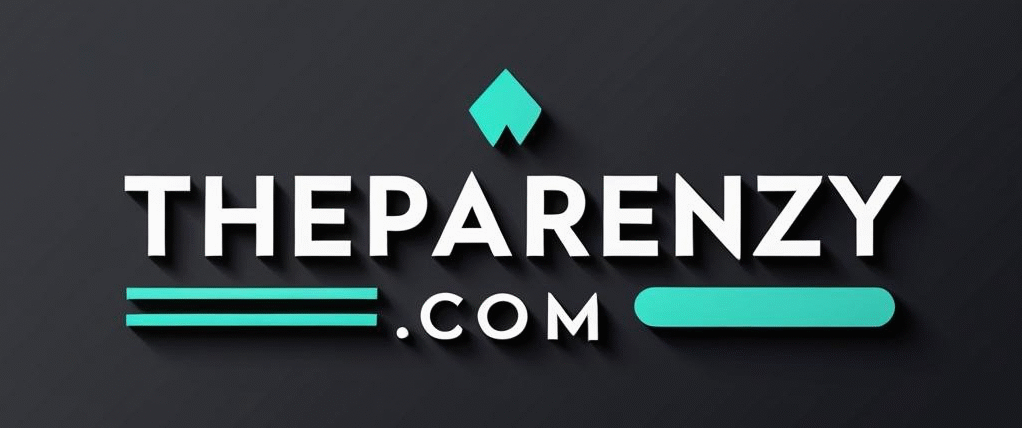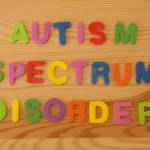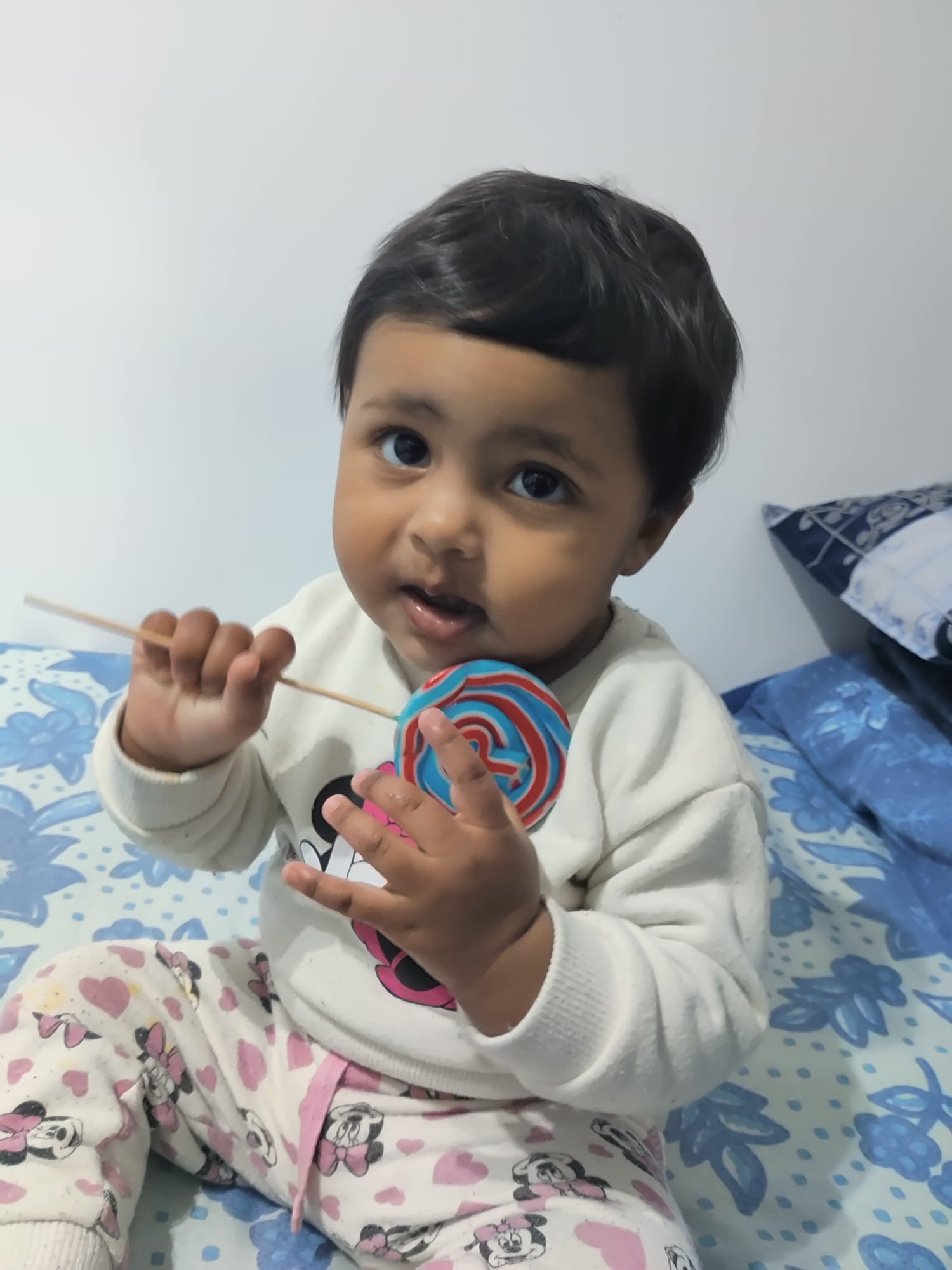Being a parent can be tough. You might see your child having trouble focusing or sitting still. Many families face similar concerns. Knowing about ADHD in children is important for helping your child.

ADHD, or Attention-Deficit/Hyperactivity Disorder, is common in kids. It shows as trouble paying attention, being too active, and acting on impulse. Spotting the signs and getting help can really help your child.
Key Takeaways
- ADHD is a common neurodevelopmental disorder in children.
- Symptoms include inattention, hyperactivity, and impulsivity.
- Early recognition and professional help are crucial.
- Understanding ADHD is key to supporting your child.
- There are effective strategies for managing ADHD symptoms.
Understanding ADHD: A Common Neurodevelopmental Disorder
ADHD is not just a behavior problem. It’s a disorder that affects how our brains grow and work. This means we need a full plan to manage it. You might wonder why so many people don’t understand it.
The Prevalence of ADHD in American Children
ADHD is common among kids in the United States. Let’s look at some numbers to see how widespread it is.
Current Statistics and Trends
About 9.4% of children aged 2-17 years have ADHD. That’s around 6 million kids in the U.S. The numbers change based on age, gender, and other factors.
Why Early Recognition Matters
Finding ADHD symptoms early is very important. You can help your child a lot by spotting signs early and getting help. Early diagnosis helps manage symptoms better and leads to better results.
How ADHD Affects Brain Development and Function
Studies show ADHD changes the brain, mainly in areas for attention, impulse control, and being active. Knowing this helps create a better treatment plan for your child.

What is ADHD? Breaking Down the Basics
Understanding ADHD starts with its basics. It’s a brain disorder that makes it hard to focus, be still, and control impulses. It’s not just being too active or having a short attention span. It’s a complex issue that affects how our brains grow and work.
The Three Types of ADHD Explained
ADHD is divided into three main types. Knowing these can help get a correct ADHD diagnosis.
Predominantly Inattentive Presentation
This type shows signs of not paying attention. People with this type might seem to be daydreaming or not listening.
Predominantly Hyperactive-Impulsive Presentation
This type shows signs of being too active and impulsive. People might fidget, have trouble waiting, or interrupt often.
Combined Presentation
This is the most common type. It shows signs of both not paying attention and being too active and impulsive.

Debunking Common Myths About ADHD
There are many wrong ideas about ADHD. One expert says, “ADHD is not from bad parenting or lack of discipline. It’s a brain condition that needs the right treatment and support.”
“The myth that ADHD is caused by too much screen time or sugar has been proven wrong by many studies.”
Studies show ADHD is mostly genetic, but environment also plays a part.
Knowing what ADHD is and clearing up myths helps support your child. It makes the diagnosis process easier.
Recognizing ADHD Symptoms in Children
Spotting ADHD symptoms early is key to helping your child. As a parent, watch for changes in your child’s behavior. Knowing the signs of ADHD helps you through the diagnosis.
Inattention Signs to Watch For
ADHD often shows as trouble focusing. Your child might:
- Failing to finish homework or chores
- Losing things like toys or school stuff
- Getting easily distracted
These signs might seem small, but if they keep happening, talk to a doctor.
Hyperactivity and Impulsivity Indicators
Hyperactivity and impulsivity are big ADHD signs. Your child might:
- Fidget or squirm in their seat
- Have trouble waiting for their turn
- Interrupt others or cut into conversations
Spotting these behaviors early is important for getting help.
How Symptoms May Differ Between Boys and Girls
ADHD shows differently in boys and girls. Boys often show more hyperactivity. Girls might show inattentiveness, which can be missed.
Why Girls Are Often Diagnosed Later
Girls with ADHD are often diagnosed later. Their symptoms can be less obvious and less disruptive. But their symptoms are still very important.
Recognizing Subtle Presentations
It’s important to know about the subtle ADHD signs, like in girls. Look for signs like:
- Daydreaming or seeming not to be there
- Having trouble keeping friends because of being distracted
The Root Causes of ADHD in Children
ADHD in kids has many causes. These include genetics, environment, and brain differences. Knowing these can help support your child.
Genetic Factors and Hereditary Patterns
Studies show ADHD often runs in families. This means genetics play a big role. If ADHD is common in your family, watch your child’s behavior closely.
Environmental Influences and Risk Factors
Things like toxins and early trauma can cause ADHD. Knowing these risks helps prevent it.
Brain Structure and Neurotransmitter Differences
ADHD is linked to brain and neurotransmitter differences. This includes dopamine and norepinephrine.
The Role of Dopamine and Norepinephrine
Dopamine and norepinephrine help with focus and control. Imbalances can cause ADHD symptoms. This knowledge helps in finding the right treatment.
| Factor | Description | Impact on ADHD |
|---|---|---|
| Genetic | Family history of ADHD | Increases risk |
| Environmental | Exposure to toxins, premature birth | Potential contributing factor |
| Neurobiological | Differences in brain structure and neurotransmitters | Directly linked to ADHD causes |
Understanding ADHD’s causes helps tackle its challenges. It leads to better support for your child.
Getting an Accurate ADHD Diagnosis
Getting a correct ADHD diagnosis is key for your child’s well-being. It helps them manage their symptoms and live better. As a parent, it’s normal to feel unsure or stressed. But knowing what to expect can help a lot.
When to Consult a Healthcare Professional
If your child shows signs of not paying attention, being too active, or acting impulsively, see a doctor. They will check if these signs mean ADHD or something else.
The Diagnostic Process Explained
Diagnosing ADHD involves a detailed check-up. This includes:
- Talking with you and your child
- Watching how they behave
- Looking at their medical and mental health history
- Using special tests
Assessments and Evaluations
This thorough check helps the doctor understand your child’s behavior. They look for any concerns.
The Importance of Multiple Perspectives
Getting info from parents, teachers, and others gives a full view of your child’s behavior. This helps make sure the diagnosis is right.
Ruling Out Other Conditions
It’s important to make sure ADHD is the right diagnosis. Other issues like sleep problems, anxiety, or learning disabilities can look like ADHD. A detailed check helps find the real cause.
| Condition | Similarities to ADHD | Key Differences |
|---|---|---|
| Sleep Disorders | Inattention, daytime fatigue | Primary symptom is sleep disturbance |
| Anxiety | Restlessness, impulsivity | Primary symptom is excessive worry or fear |
| Learning Disabilities | Difficulty with focus, organization | Primary symptom is specific learning challenge |
Effective ADHD Treatment Options for Children
Helping children with ADHD need a good plan. This plan should include medicine, therapy, and help at school.
Medication Approaches and Considerations
Medicine is key in ADHD treatment. There are many medicines, each with good points and possible bad effects.
Stimulant Medications: Benefits and Side Effects
Stimulant medicines like Ritalin and Adderall help a lot. They make it easier to focus and less likely to act out or move too much. But, they might make you feel hungrier or have trouble sleeping.
Non-Stimulant Options
For kids who can’t take stimulants or have health issues, there’s Strattera. It helps with ADHD without the side effects of stimulants.
Behavioral Therapy and Counseling
ADHD therapy is very important. It teaches kids how to control their actions and get along better with others.
Cognitive Behavioral Therapy (CBT)
CBT helps kids change bad thoughts and actions. It works well for kids with ADHD.
Parent Training Programs
These programs teach parents how to handle ADHD in their kids. They help improve how kids and parents get along and reduce stress.
School-Based Interventions and Accommodations
Help at school is crucial for kids with ADHD. This includes special plans, classroom help, and support for behavior.
Some good ways to help include:
- Breaking tasks into smaller, manageable steps
- Providing extra time to complete assignments
- Using positive reinforcement to encourage good behavior
By using all these methods, you can make a strong ADHD treatment plan. This plan will help your child do well and feel good.
Parenting Strategies for Children with ADHD
Parenting a child with ADHD can be tough. But, the right strategies can make a big difference. They help create a supportive space for your child to grow.
Creating Structure and Routine at Home
Having a daily routine is key for kids with ADHD. It makes them know what to do and keeps things calm.
Visual Schedules and Reminders
Visual schedules and reminders are super helpful. Charts and calendars around the house remind your child of their tasks and when things happen.
Consistent Rules and Expectations
Being consistent with rules and expectations is very important. Clear rules help your child know what’s right and wrong. This makes it easier for them to behave well.
Effective Discipline Techniques That Work
Disciplining a child with ADHD needs patience and understanding. Positive reinforcement is very powerful. Rewarding good behavior encourages more of it.
Building Your Child’s Self-Esteem and Confidence
Children with ADHD often feel bad about themselves. It’s important to build their confidence.
Celebrating Strengths and Achievements
Celebrating your child’s strengths and achievements is very important. It boosts their self-esteem. Seeing their efforts and successes helps them feel good about themselves.
By using these strategies, you can make a caring environment. It supports your child’s special needs and helps them do well.
ADHD Dos and Don’ts: Practical Guidance for Parents
Knowing what to do and what not to do with ADHD can really help your child. It’s important to use good strategies and avoid mistakes. This way, you can support your child well.
What to Do: Effective Approaches
Using the right strategies can change your child’s day for the better. Here are some good ways to help:
Breaking Tasks into Manageable Steps
Breaking tasks into smaller steps helps kids with ADHD a lot. It makes things less scary and more doable. Use a task list or a planner to help your child stay on track.
Providing Clear, Concise Instructions
It’s key to give clear instructions. Make sure your child is listening before you tell them what to do. Showing them how to do it can also help.
Creating Opportunities for Success
Find areas where your child can do well and give them chances to succeed. Always praise their hard work and achievements. This boosts their confidence and self-esteem.
What Not to Do: Common Pitfalls to Avoid
Staying away from certain mistakes can make your child’s life better.
Avoiding Negative Labels and Criticism
Being too hard on your child can hurt them. Instead, talk about the behavior, not the child. Use positive words to help them do better.
Managing Your Own Frustration
It’s key to keep your cool when dealing with your child’s ADHD. Take a break, breathe, and think before you react. Don’t let anger take over.
Preventing Comparison with Siblings or Peers
Don’t compare your child to others. It’s not good. Focus on their own growth and celebrate their special talents.
ADHD in the Classroom: Supporting Your Child’s Education
Creating a supportive learning environment is key for kids with ADHD to do well in school. As a parent, you’re very important in making sure your child gets the help they need to succeed.
Working with Teachers and School Staff
Working together with teachers and school staff is very important. They can help make a plan to support your child’s learning. Make sure to talk to them often and share how your child is doing.
IEPs and 504 Plans: What You Need to Know
It’s important to know the difference between IEPs and 504 Plans. An IEP gives special instruction and services. A 504 Plan helps make sure your child has equal access to education. Learn about the services and accommodations in your child’s plan.
Homework Strategies for Success
Having a regular homework routine is helpful. Here are some tips:
- Make a special homework area with no distractions.
- Break big assignments into smaller tasks.
- Use a planner or app to keep track of homework.
Creating an Optimal Study Environment
Choose a quiet, comfy spot for your child to study. Make sure it has what they need, like a computer and paper.
Breaking Down Assignments
Big assignments can be too much for kids with ADHD. Help them by breaking tasks into smaller steps. Also, teach them how to organize and prioritize their work.
By working with teachers and using good homework strategies, you can help your child with ADHD do well in school. Remember, every child is different. So, it’s important to find what works best for them.
ADHD in Adults: How Symptoms Evolve Over Time
ADHD is not just for kids. It can affect adults too. As you get older, ADHD symptoms can change. It’s important to know how to handle these changes.
Recognizing Adult ADHD Symptoms
Adult ADHD symptoms are different from those in kids. Hyperactivity might lessen, but inattention and impulsivity can stay or change.
Executive Function Challenges
Adults with ADHD often have trouble with organization and time management. These issues can affect work and daily life.
Emotional Regulation Issues
Adults with ADHD may find it hard to control their emotions. Mood swings and stress can be big problems.
Career Challenges and Workplace Accommodations
ADHD can make work harder. Finding ways to manage ADHD at work, like flexible hours or tools, can help.
| Workplace Accommodation | Benefit |
|---|---|
| Flexible Work Hours | Improved Time Management |
| Task Management Tools | Enhanced Organization |
| Regular Breaks | Reduced Stress |
Relationship Impact and Communication Strategies
ADHD can affect relationships. Good communication, like listening well and being clear, can help.
Treatment Options for Adult ADHD
There are many ways to treat adult ADHD. These include medicine, therapy, and lifestyle changes.
Medication Considerations
Medicine can help with ADHD. But, it’s key to find the right medicine with a doctor.
Therapy and Coaching Approaches
Therapy and coaching can teach adults with ADHD how to manage their symptoms. This can improve their life a lot.
Lifestyle Modifications That Help Manage ADHD
You can manage ADHD better by making lifestyle changes. These changes can improve your well-being and control ADHD symptoms.
Nutrition and Diet Considerations
Eating well is key for managing ADHD. Some foods help, while others can make symptoms worse.
Foods That May Help or Hinder
Foods with omega-3 fatty acids, like salmon, and high in fiber, such as fruits and veggies, are good. But, too much sugar and artificial stuff can make symptoms worse.
- Beneficial Foods: Omega-3 rich foods, fruits, vegetables
- Foods to Avoid: High sugar foods, artificial additives
Supplement Considerations
Supplements like omega-3 fatty acids, vitamin D, and magnesium might help with ADHD. But, talk to a doctor before taking any.
The Importance of Physical Activity
Exercise is a great way to manage ADHD. It helps improve focus and concentration.
Exercise as a Natural ADHD Management Tool
Doing aerobic exercises like running or cycling helps with ADHD. Even simple walks can be good.
Sleep Hygiene and ADHD Management
Good sleep is important for ADHD. Bad sleep makes symptoms worse, making it hard to focus and control impulses.
Creating a Bedtime Routine
Having a bedtime routine helps sleep better. Avoid screens before bed and make your sleep area calm.
Managing Screen Time
It’s important to limit screen time, esp. before bed. Too much screen time can mess with sleep and make ADHD symptoms worse.
By making these lifestyle changes, you can create a better environment for managing ADHD symptoms.
Read more; https://theparentzy.com/autism-spectrum-disorder-symptoms-and-causes/
Read more; https://theparentzy.com/understanding-childrens-mental-health/
Conclusion: Empowering Your Child’s Journey with ADHD
Remember, you’re not alone in dealing with ADHD in kids. Learning about ADHD and using good parenting tips can help a lot. This way, you can make a safe space for your child to grow.
We talked about many things in this article. We covered what ADHD is, how to find out if your child has it, and how to treat it. Knowing a lot about ADHD can help your child do well and reach their dreams.
Good parenting is key in helping kids with ADHD. A set routine, positive words, and being active can help a lot. With the right help, kids with ADHD can live happy, healthy lives.
FAQ
What is ADHD, and how does it affect children?
ADHD stands for Attention-Deficit/Hyperactivity Disorder. It affects kids and adults. Kids with ADHD find it hard to focus and behave. This makes school and social life tough.
What are the common symptoms of ADHD in children?
Kids with ADHD often can’t pay attention or sit still. They might fidget a lot or interrupt others. They also have trouble following instructions.
How is ADHD diagnosed, and what is the diagnostic process like?
Doctors check for ADHD by doing a physical exam and talking to the child and family. They also look at how the child behaves. This helps figure out if they have ADHD.
What are the different types of ADHD, and how do they differ?
ADHD comes in three types. There’s the inattentive type, the hyperactive-impulsive type, and the combined type. Each type has its own signs. Knowing this helps doctors find the right treatment.
What are the treatment options for ADHD, and how can they help?
Treatments for ADHD include medicine and therapy. Medicine helps control symptoms. Therapy teaches kids how to manage their ADHD better.
How can parents support their child with ADHD, and what strategies are most effective?
Parents can help by making a routine and using positive words. They should give clear instructions. Breaking tasks into steps and using visual aids also helps.
Can ADHD be outgrown, or does it persist into adulthood?
Some kids outgrow ADHD, but many don’t. Adult ADHD can affect daily life and work. It’s different from childhood ADHD.
How can adults with ADHD manage their symptoms and improve their quality of life?
Adults with ADHD can use planners and reminders. They should break tasks into smaller steps. Therapy and regular exercise also help.
What lifestyle changes can help alleviate ADHD symptoms?
Regular exercise and a healthy diet help with ADHD. Good sleep and avoiding too much screen time also help.
How can educators and schools support students with ADHD?
Schools can help by giving extra time and a quiet place to work. They can also use special technology. Working with parents is key to helping the child succeed.





Pingback: What Should Eat Child at 1 to 3 Year Old? - Theparentzy.com